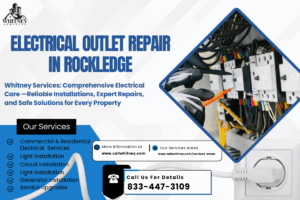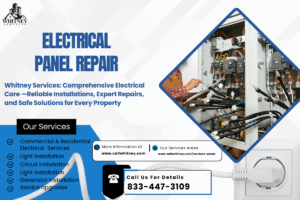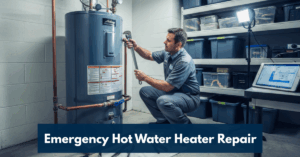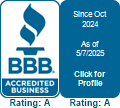Few things feel better than stepping into a warm home on a chilly evening. If you’ve ever wondered how to install an electric furnace, you’re in the right place. Whether you’re curious about the process, considering doing some parts yourself, or planning to hire professionals, this guide breaks down everything you need to know, from tools and costs to safety tips and common mistakes.
At Whitney Services, we know how much comfort a reliable heating system brings to your family. That’s why we’re passionate about helping homeowners understand the furnace installation process, so you can make the best choices for your home.
Key Takeaways
- Installing an electric furnace requires planning, proper tools, correct electrical work, and attention to safety.
- While homeowners can handle parts of the process, major steps, especially wiring are best left to professionals.
- Costs depend on furnace size, electrical upgrades, ductwork, permits, and labor.
- Avoiding common mistakes like undersizing, poor wiring, and skipped testing ensures long-term safety and efficiency.
What Tools Are Needed to Install an Electric Furnace?
Before starting, you’ll want to gather the right tools and materials. Having everything ready not only saves time but also keeps the project running smoothly.
Here’s a checklist:
- Cordless drill and impact driver: For fastening brackets and securing the furnace in place.
- Sheet metal snips: To adjust ductwork if needed.
- Tape measure and level: So the furnace sits evenly and ducts align properly.
- Wire cutters and strippers: Essential for electrical prep.
- Multimeter or voltage tester: To ensure circuits are safe and carrying the right voltage.
- Screwdrivers (flat-head and Phillips): Always handy for panels and connections.
- Copper wire and connectors: Gauge must match furnace specifications.
- Dedicated breaker: Electric furnaces draw a lot of current, so they need their own breaker.
- Duct sealant or foil tape: To seal connections and prevent air leaks.
- Mounting pad or platform: Keeps the furnace stable and safe.
- Safety gear: Gloves, goggles, and protective clothing.
Pro tip: Label your tools and parts as you go, it makes troubleshooting later much easier.
How Long Does It Take to Install an Electric Furnace?
The timeline for furnace installation can vary, but here’s a general idea:
- Preparation: Inspecting the site, clearing space, ordering the unit, prepping ductwork and electrical. This can take a day or two.
- Physical installation: Moving the furnace into place, securing it, attaching ducts and panels. Usually 4–8 hours.
- Electrical connections: Running wires, installing the breaker, grounding the system, and testing voltage. Around 1–4 hours, depending on your setup.
- Testing and adjustments: Verifying thermostat operation, airflow, heating cycles, and safety shut-offs. This takes 30 minutes to 2 hours.
If everything is ready (good ducts, strong electrical panel, easy access), a furnace can sometimes be installed in a single day. But if upgrades are needed, such as running new wiring or repairing ducts, the job can stretch over multiple days.
Can a Homeowner Install an Electric Furnace Themselves?
Here’s the honest answer: yes, but with big limitations.
What you can usually do yourself:
- Clear the space and prepare the site.
- Move the furnace into position with help.
- Attach ducts or panels with basic tools.
- Seal simple duct joints with foil tape.
What you should leave to a professional:
- Electrical wiring and breaker installation.
- Load calculations to size the furnace correctly.
- Code compliance, permits, and inspections.
- Final safety testing and commissioning.
Even if you’re handy, electric furnaces require high-amperage circuits that can be dangerous if not handled correctly. That’s why Whitney Services always recommends having licensed technicians handle the critical parts. It keeps your home safe and your furnace running properly.
What Safety Precautions Should Be Taken?
Safety isn’t optional, it’s essential. Here are key precautions during furnace installation:
- Turn off power at the panel before starting.
- Use the correct wire gauge and breaker size for the furnace’s load.
- Ensure proper grounding to prevent shocks or fire hazards.
- Maintain clearances around the furnace for airflow and service access.
- Keep the area clean and uncluttered to avoid hazards.
- Wear gloves and goggles while working with sheet metal and wires.
- Seal all ductwork joints to prevent leaks.
- Double-check local codes and permits before starting.
- Test thoroughly after installation, thermostat, heat cycles, and airflow.
- Schedule regular maintenance after installation.
Following these steps not only protects your home but also helps your furnace run efficiently for years to come.
How Much Does It Cost to Install an Electric Furnace?
Cost is always top of mind, and for good reason. Here’s what affects the price:
- Furnace size and model: Bigger or high-efficiency models cost more.
- Electrical upgrades: Adding a breaker, upgrading wires, or replacing an old panel increases cost.
- Ductwork: Sealing, repairing, or replacing ducts can be a major factor.
- Labor rates: Vary by region and complexity of the job.
- Permits and inspections: Required in many areas.
The good news? Once installed, electric furnaces often last 15–20 years with proper care, making them a solid long-term investment in comfort.
Common Mistakes When Installing an Electric Furnace
Avoiding mistakes can save you money, time, and frustration later. Some of the most common missteps include:
- Undersizing or oversizing the furnace: Leading to inefficiency and discomfort.
- Ignoring electrical requirements: using undersized wires or breakers can be dangerous.
- Poor duct connections: Resulting in air leaks and uneven heating.
- Skipping clearance requirements: Leading to overheating or safety issues.
- Not sealing ducts: Causing wasted energy and higher bills.
- Skipping testing: Leaving hidden problems unnoticed.
- DIY electrical work without expertise: A major safety hazard.
- Failing to maintain the system afterward: Reducing efficiency and shortening lifespan.
Simply put: the best way to avoid these pitfalls is by trusting qualified heating services like Whitney Services.
Why Choose Whitney Services
When you’re investing in a new furnace, you deserve a team you can trust. Whitney Services delivers:
- Expert technicians who handle every detail from electrical to ductwork.
- Transparent pricing with no hidden surprises.
- Full-service support, including permits, inspections, and post-installation maintenance
- A safety-first approach, ensuring your furnace is compliant and reliable.
- Ongoing customer care, so you always have help when you need it.
We’re not just about installing furnaces, we’re about creating long-term comfort for your home.
Conclusion
Installing an electric furnace isn’t just another home project, it’s about ensuring your family stays warm, safe, and comfortable for years to come. Whether you’re curious about the process or preparing for installation soon, knowing the steps and precautions will help you make confident decisions.
If you’re ready for professional furnace installation, Whitney Services is here to make the process smooth, stress-free, and reliable. From start to finish, we’ll ensure your new furnace is installed safely and runs at peak efficiency.
Frequently Asked Questions
With proper installation and regular maintenance, most electric furnaces last 15–20 years or more.
Yes, electric furnaces do use a lot of electricity. However, proper sizing, sealed ducts, and good insulation can help control costs.
In most areas, yes. Electrical work almost always requires a permit and inspection.
Furnace size depends on square footage, insulation, and local climate. A professional can do a load calculation to find the right fit.
Basic maintenance includes changing filters regularly, keeping ducts clean, inspecting electrical connections, and scheduling annual service.







